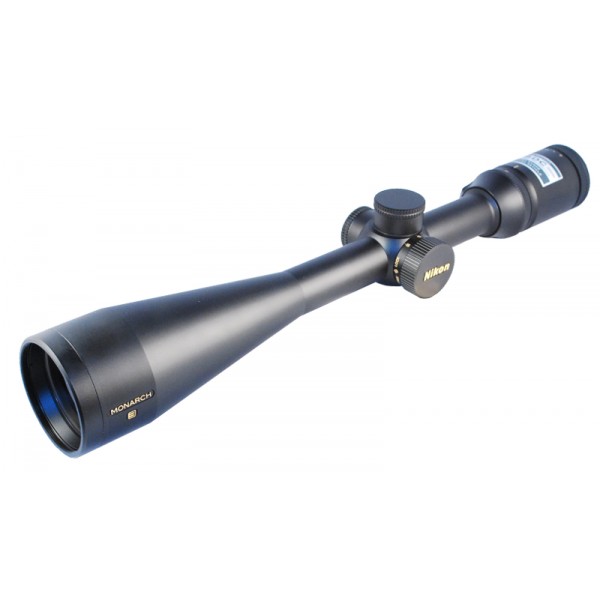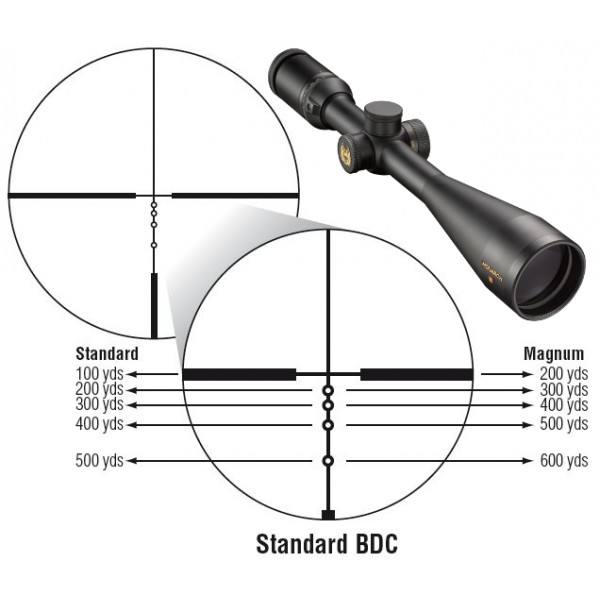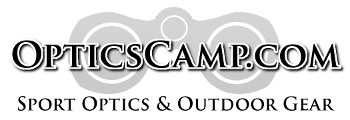No products
Product successfully added to your shopping cart
There are 0 items in your cart. There is 1 item in your cart.
Nikon Monarch 3 4-16x50 SF
-
Binoculars
-
Celestron Binoculars
- Celestron Cavalry Binoculars
- Celestron Cometron Binoculars
- Celestron Cypress Binoculars
- Celestron Echelon Binoculars
- Celestron Granite Binoculars
- Celestron Landscout Binoculars
- Celestron Nature DX Binoculars
- Celestron Outland X Binoculars
- Celestron SkyMaster Binoculars
- Celestron Trailseeker Binoculars
- Celestron UpClose G2 Binoculars
- German Precision Optics Binoculars
- Luna Optics Binoculars
- Meade Binoculars
-
Opticron Binoculars
- Opticron Adventurer Binoculars
- Opticron Discovery Binoculars
- Opticron Explorer Binoculars
- Opticron HR WP Binoculars
- Opticron Imagic TGA Binoculars
- Opticron Natura BGA Binoculars
- Opticron T4 Trailfinder WP Binoculars
- Opticron Oregon 4 Binoculars
- Opticron Savanna Binoculars
- Opticron Traveller BGA Binoculars
- Styrka Binoculars
- Binocular Accessories
-
Celestron Binoculars
- Flashlights
- Night Vision
- Open Sights
- Outdoor Gear
- Rangefinders
- Red Dot Sights
- Rifle Scopes
- Scope Mounts
- Spotting Scopes
- Tactical Gear
- Telescopes
- Thermal Vision
- Trail Cameras
- Tripods
- Clearance
- Used & Demo
- Archery
- 12 Survivors
- Aero Precision
- AIM Sports
- BKL Scope Mounts
- Celestron
- Dead Ringer
- EGW
- F3R Machine
- Firefield
- Full Moon Optics
- Fulton Flashlights
- Galloway Precision
- German Precision Optics
- Harris
- HIVIZ Sights
- Holosun
- INTEGRIX
- Kopfjager
- Leupold
- LPA Sights
- Luna Optics
- Meade
- NcSTAR
- NEBO
- Opticron
- Pulsar
- RedRing Shotgun Sights
- See All
- Seekins Precision
- Sightmark
- SiteLite
- Styrka
- Talley
- Tech Sights
- True Utility
- UTG
- VISM
- Warne
Follow us on Facebook
Viewed products
-

Nikon Monarch 3...
Side focus adjustment - Free Same Day...
Nikon Monarch 3 4-16x50 SF Rifle Scope BDC Reticle 6775
NKNRS-MON041650-BDC
New
Side focus adjustment - Free Same Day Shipping
This product is no longer in stock
- Remove this product from my favorite's list.
- Add this product to my list of favorites.
Data sheet
| Magnification: | 4x - 16x |
| Objective diameter: | 50 mm |
| Exit pupil: | 3.1 - 12.5 mm |
| Field of view: | 6.3 - 25.2 ft @ 100 yds |
| Eye relief: | 4 inches |
| Tube diameter: | 1 inch |
| Click value: | 1/4 MOA (1/4 inch @ 100 yards) |
| Elevation/Windage: | 50 MOA / 50 MOA |
| Lens coatings: | Fully multi-coated |
| Body: | One piece anodized aluminum |
| Waterproof: | Yes |
| Nitrogen purged: | Yes |
| Size: | 14.7 inch length |
| Weight: | 19.4 oz |
| Included accessories: | Flip-up scope covers, cleaning cloth |
More info
Nikon Monarch 3 4-16x50 SF Review
 The Nikon Monarch 3 4-16x50 SF rifle scope is the next generation of Nikon Monarch, and is designed for long-range hunters and shooters. This scope is big, it's powerful, and the large 50mm objective gathers more light, extending your hunting time to a few minutes past dusk. Compared to the 42mm version of this scope on paper, the Monarch 3 4-16x50 SF is less than an ounce heavier (19.4 oz), and just over an inch longer (14.7 inch length). We checked in-house and found that these numbers are a little optimistic. With the included lens caps attached, the end-to-end length of the Monarch 3 4-16x50 is actually about 15.25 inches, and the weight is just a hair over 20 ounces (20.3 ounces, to be exact). But that's still surprising - first glance at the scope would make you think that it is closer to two pounds.
The Nikon Monarch 3 4-16x50 SF rifle scope is the next generation of Nikon Monarch, and is designed for long-range hunters and shooters. This scope is big, it's powerful, and the large 50mm objective gathers more light, extending your hunting time to a few minutes past dusk. Compared to the 42mm version of this scope on paper, the Monarch 3 4-16x50 SF is less than an ounce heavier (19.4 oz), and just over an inch longer (14.7 inch length). We checked in-house and found that these numbers are a little optimistic. With the included lens caps attached, the end-to-end length of the Monarch 3 4-16x50 is actually about 15.25 inches, and the weight is just a hair over 20 ounces (20.3 ounces, to be exact). But that's still surprising - first glance at the scope would make you think that it is closer to two pounds.
Like all Monarch 3 scopes, the Monarch 3 4-16x50 SF utilizes an industry standard one piece aluminum body. The finish is a matte black anodized paint, utilizing a technique that provides a thicker and more durable paint coating. The main body tube on the 4-16x50 is one inch in diameter (25.4 mm). Normally, you'll see 30mm tubes on scopes designed for long range shooting, but with 50 available MOA of adjustment, shooters should easily be able to surpass 600 yards, and approach 1000 (as long as the shooter is capable, that is).
 The Nikon Monarch 3 4-16x50 includes both a quick focus eyepiece for fast adjustment, and a side focus adjustment knob for adjusting parallax at longer ranges. The quick focus eyepiece ring rotates freely with just the right amount of resistance, and is best for adjusting the reticle at shorter ranges. The side focus is used to correct for parallax, which is the apparent movement of the reticle against the target when your eye is moved from side to side. If not set correctly, this can affect accuraccy, This is why you typically see side focus options on higher power scopes. The side focus on this particular model uses the new Monarch 3 push/pull locking system. When pushed in, the knob is locked, and focus cannot be adjusted. Pull it out, however, and you can adjust the reticle from 50 yards to infinity, or anywhere from 50 to 1000 yards. As far as the mechanism itself, it's obviously built to close tolerances and is easy to turn without much thought. With the high contrast gold numbers against the black matte finish, shooters should have no problems reading the dial and adjusting without having to move from shooting position.
The Nikon Monarch 3 4-16x50 includes both a quick focus eyepiece for fast adjustment, and a side focus adjustment knob for adjusting parallax at longer ranges. The quick focus eyepiece ring rotates freely with just the right amount of resistance, and is best for adjusting the reticle at shorter ranges. The side focus is used to correct for parallax, which is the apparent movement of the reticle against the target when your eye is moved from side to side. If not set correctly, this can affect accuraccy, This is why you typically see side focus options on higher power scopes. The side focus on this particular model uses the new Monarch 3 push/pull locking system. When pushed in, the knob is locked, and focus cannot be adjusted. Pull it out, however, and you can adjust the reticle from 50 yards to infinity, or anywhere from 50 to 1000 yards. As far as the mechanism itself, it's obviously built to close tolerances and is easy to turn without much thought. With the high contrast gold numbers against the black matte finish, shooters should have no problems reading the dial and adjusting without having to move from shooting position.
That clear marking continues down to the magnificatoin adjustment, which is clearly marked from 4-16x power. As expected, the magnificaton adjustment is just as tight and precise as any of the other Monarch scopes, and the tolerances are obviously small.
 The turrets on the Monarch 3 4-16x50 SF are the same turrets found on the rest of the Monarch 3 lineup, and have a maximum windage and elevation adjustment range of 50 MOA in 1/4 MOA increments (about 1/4 inch at 100 yards). The turrets are usually one of the first parts of the scope we inspect, and we are looking for good audible feedback (definite clicks) and feel, as well as precision - the arrow and lines should line up consistently, even after a full turn. As usual, the turrets on this scope meet all the criteria. In addition, the turrets on the Monarch 3 4-16x50 SF feature a single center set screw that can be loosened to re-zero the turrets once the scope is sighted in. This allows some shooters to utilize the turrets for reticle adjustment at known distances.
The turrets on the Monarch 3 4-16x50 SF are the same turrets found on the rest of the Monarch 3 lineup, and have a maximum windage and elevation adjustment range of 50 MOA in 1/4 MOA increments (about 1/4 inch at 100 yards). The turrets are usually one of the first parts of the scope we inspect, and we are looking for good audible feedback (definite clicks) and feel, as well as precision - the arrow and lines should line up consistently, even after a full turn. As usual, the turrets on this scope meet all the criteria. In addition, the turrets on the Monarch 3 4-16x50 SF feature a single center set screw that can be loosened to re-zero the turrets once the scope is sighted in. This allows some shooters to utilize the turrets for reticle adjustment at known distances.
 The Monarch 4-16x50 also includes a set of flip-up lens caps. These lens caps are about as high quality as you'd get from any other manufacturer, and we can't see reason why they won't work for the long term. We have compared them to our very popular Leapers scope caps. The design is slightly different, and the included Nikon caps aren't see-through, but they are functionally reliable. A quick flip of the thumb causes the spring-loaded hinge to open fully, and you're ready to shoot. Many hunters purchase aftermarket lens caps for their rifles by default, so having them included is a plus.
The Monarch 4-16x50 also includes a set of flip-up lens caps. These lens caps are about as high quality as you'd get from any other manufacturer, and we can't see reason why they won't work for the long term. We have compared them to our very popular Leapers scope caps. The design is slightly different, and the included Nikon caps aren't see-through, but they are functionally reliable. A quick flip of the thumb causes the spring-loaded hinge to open fully, and you're ready to shoot. Many hunters purchase aftermarket lens caps for their rifles by default, so having them included is a plus.
Optically, the Monarch 4-16x50 is rather impressive. At first, we thought we noticed a slight ribbon of chromatic aberration at 4x, but when we magnified to 16x, it was barely visible, and anybody but the most discriminating optics geek probably wouldn't notice. Rolling ball is not apparent, and edge clarity is very good. The sight picture is fantastic - no blurriness, cloudiness, or lack of definition. The color offset trends a bit towards the warm end of the spectrum. This scope really can't be compared to the Prostaff and Buckmasters scopes currently available from Nikon, it just wouldn't be fair - the Monarch 3 is just that much better.
The BDC reticle on this model is slightly different from most other BDC reticles, and features several "dots" with open centers instead of the commonly accepted hash mark reticle. Not really good or bad, but personal preference will determine which configuration you're more inclined to favor. Of course, you'll still have to do range testing to determine exactly what your bullet drop is, and that will be true for any BDC reticle on any caliber firearm.
Included accessories are the previously mentioned flip up lens caps, and a rather sizable microfiber cloth. In addition, the scope also comes with manufacturer's warranty card and an instruction manual that could be mistaken for a large novel.
Overall, the Nikon Monarch 3 4-15x50 is a great scope in a very lightweight package. If you're looking for a long range rifle scope but are concerned about weight (and price), this may be what you're looking for.
Using the Nikon BDC Reticle
The Nikon BDC Reticle is designed to compensate for ballistics of your rifle at increasing ranges. Each circle along the vertical post of the Nikon BDC reticle corresponds to a different range. Depending on your caliber, load, and environmental conditions, your point of impact at ranges will vary. Nikon provides some basic guidance for use of the BDC reticle, based on testing performed with standard velocities for non-magnum calibers of 2,800 feet per second, and magnum calibers at 3,000 feet per second.
 When using the Nikon BDC reticle, you should have your scope set to maximum magnification. Because Nikon rifle scopes have the reticle in the second focal plane, the BDC reticle is only accurate when set to maximum magnification. Utilizing the BDC reticle for holdover on other magnifications will cause your shots to miss their mark.
When using the Nikon BDC reticle, you should have your scope set to maximum magnification. Because Nikon rifle scopes have the reticle in the second focal plane, the BDC reticle is only accurate when set to maximum magnification. Utilizing the BDC reticle for holdover on other magnifications will cause your shots to miss their mark.
For non-magnum calibers, the center crosshair should be zeroed at one hundred yards. The first circle below the crosshair corresponds to 200 yards, the second to 300 yards, the third to 400 yards, and the fourth to 500 yards.
For magnum calibers, the center crosshair should be zeroed at two hundred yards. The first circle below the crosshair corresponds to 300 yards, the second to 400 yards, the third to 500 yards, and the fourth to 600 yards.
Keep in mind that this is a rough estimate of where you can expect your shot to penetrate the target, but the guidelines should at least get you on paper. You will have to put in some range time to learn exactly how much drop you're experiencing.
Nikon also offers the Spot On program to determine your rifle's capabilities with the Nikon BDC reticle. By going to the Spot On website, you can input your cartridge information for more precise ballistics data.
















